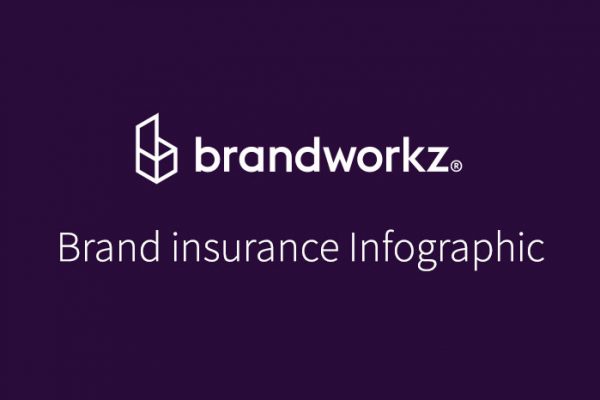When you’re zoning out during the television ad breaks (or hovering your cursor over the skip button on YouTube) you’re likely not paying much attention to what’s happening on the screen. Still, by the time your programme’s back on, the chances are that you remember ads from all of the usual big hitters, including Coca Cola (who could ignore that red?) or Compare the Market (meerkats anyone?).
The reason that you remember these ads is because these brands have something that sticks in your mind — a consistent brand identity that you recognise without even realising. Think about it, even on a subconscious level, which is apparently where we make 95% of our purchasing decisions anyway, the branding for these companies gets across a message that you’re already familiar with without necessarily needing to do the legwork.1 Brand consistency is how you build those messages in the minds of your audience.
Admittedly, smaller budgets and distribution issues are just some of the reasons why it can be difficult for your average company to replicate the consistency of the global giants. However, with the right planning, good brand guidelines and a brand management system built for modern marketing, remaining consistent while still being creative and flexible is within any brand’s grasp. This article is about helping you dig into the details of brand consistency and start building foundations to remain consistent long-term.
Additional resources: For practical help really putting brand consistency into action, check out our new Brand Consistency Toolkit in order to audit your current system and improve results today!
What is brand consistency?
Brand consistency is all about how you deliver your overall message in keeping with elements that remain consistent across everything your brand does, this includes when you want to take up the opportunity nailing the basics of rebranding. This operates on two levels —
- The little things: This is stuff like exact colours (including secondary and tertiary colours), your favicons, tone of voice, logo placement, images, etc. It’s literally all of the visual and written elements that make up your brand, and it can be A LOT of little things.
- The big things: This is your core brand identity, values and message. This is what you want your brand to communicate to your audience.
Ultimately, the little things are what build the tapestry that is able to communicate those big picture values. By keeping those little things consistent, you’re better able to make those connections with your customers over time.
By ensuring that your brand is easily recognisable to the widest possible group of consumers across all marketing channels, this enables you to start building trust and cementing your place in the advertising canon. The ability to make consumers feel like they KNOW you means that you shouldn’t need meerkats to get sceptical customers onboard, although cute animals definitely don’t hurt if they sit well with your messaging.
Pro tip: As should be pretty obvious from this definition, brand consistency will only really have an impact on your ability to connect with your audience if you have a strong brand in the first place. Ideally, your brand consistency strategy should help you be creative and remain focused on those larger brand strategy decisions.
Why is brand consistency so important?
We know what you’re thinking — there are already a million and one challenges faced by brand managers, and all of this sounds like a lot of work. So, is it really essential?
Well, yes, considering that 87% of customers think brands should work harder to deliver consistent experiences.2 On the plus side, you WILL enjoy the spoils of your efforts here with potential for as much as 23% more revenue when you finally tick all consistency boxes.3 The question is, why on earth does brand consistency hold all of this pulling power in the first place?
- Brand recognition: We’ll talk about this more in a little while because, spoiler, it’s a bit of a big deal, but when your branding is consistent, you ensure that people know who you are and what you stand for, even from a quick glimpse of an ad when they’re scrolling on their Insta.
- An exercise in trust: Like the grudging love in a long-lasting marriage, familiarity generally breeds trust (but hopefully not contempt!). Consistent and familiar branding achieves that trust in the first place, while long-term consistency allows you to water that trust until it turns into a beautiful, and lucrative flower of mutually beneficial business that makes consumers 81% more likely to buy. 4
- Fostering positive emotions: Consistent brands can also feel like the worn blankets that we wrap ourselves in when we need a little me-time — they keep us warm, we know exactly what we’re getting from them, and most importantly, they make us happy.
- The money side of things: Less sentimentally, consistency also rakes in the big bucks, especially when you consider that generally speaking, ⅓ of customers already have a brand in mind when they go shopping.5 If your branding is like a shot out of the dark every time, you’ll be fighting an uphill battle. By comparison, consistent marketing makes it far more likely that YOU’LL be the brand they come looking for.
The link between brand consistency and brand recognition
It’s impossible to talk about the importance of brand consistency without referring to recognition which, honestly, pulls the strings for all other benefits mentioned. After all, 59% of consumers prefer to buy from familiar brands. 6
Brand recognition is also responsible for the emotionally-led purchases that have a huge impact on whether or not consumers choose to buy. Once you get to the point where they recognise, or even feel an emotional connection, with your logo (the most recognizable identifier in 75% of cases) or your colour scheme alone, you can boost sales using even the most basic of ad placements.7
Brand consistency strategies that work
Building a strategy for how to create brand consistency across every channel is hard, particularly in the context of digital marketing channels that multiply faster than rabbits these days. 77% of companies still occasionally produce off-brand content, and the need to accommodate different customer journeys and channels is a big part of that.8 So, what should you do?
Strategy 1: Implement clear brand guidelines
Brand guidelines effectively list all of the ingredients necessary to create consistency that stands the test of different platforms, like a recipe for the perfect cake that’s suited to every occasion. Utilised correctly, brand guidelines should allow users to create something unique and on-brand for a new marketing channel, offering an accessible and easy-to-implement guideline across ALL elements of your branding journey, including —
- Logo
- Visual branding guidelines
- Tone of voice (TOV)
- Typography
- Visual brand style guides
- And more
It’s also essential to ensure easy access to this information (using online publishing/multi-level flexibility/etc.), as well as making sure that it’s easily editable for relevance at all times… by the right people.
Strategy 2: Centralising and simplifying access to ALL assets
You could argue that brand assets such as images and typography are the ingredients that bring brand guidelines together. Hence, it’s also essential to consider centralised, simple access to ALL assets across the branding journey.
Centralised digital asset management platforms (DAMs) offer the best way to do this, not least because they enable you to categorise and store assets in one place. Single sign-ons and integrations with whatever tools your team happens to be using are especially useful, as are specific permissions that provide maximum visibility over what exists, and to help all team members find the precise branding ingredients they need, as soon as they need them.
Suggested reading: For more info on what to look for in a good DAM, check out our recent post — Which file formats should your DAM system support?
Strategy 3: Using web-to-publish templates
Of course, the best-laid plans don’t always work out. With branding, especially, already pushed teams won’t always read even the most accessible of brand guidelines under the admittedly fair assumption that you’ll provide them with everything that they need to get this right anyway. Web-to-publish templates that provide accessible, customisable, and importantly pre-approved marketing templates are therefore the best way to ensure that updated brand messaging and requirements are used by all, and adaptable to whatever market a team member is working in.
Strategy 4: Building transparent approval workflows
As the amount of marketing content increases, you’re also going to want to extend the benefits of pre-approval to even new assets to ensure that ALL MARKETING is consistent at ALL TIMES. Automated, transparent approval workflows make this possible while simultaneously eliminating the risk of cut corners or quality compromises by —
- Tailoring workflows according to business requirements
- Ensuring approvals, reviews, and content annotations according to predetermined guidelines
- Providing a complete dashboard overview of brand content as it’s created
- Sending real-time alerts if action is required to keep branding moving
- Recording what was approved by who and when
Brand consistency demands a brand management system
Coca Cola didn’t take charge of the colour red with half-considered approaches and an it’ll-do advertising attitude. Instead, consistency is a carefully tailored process that takes time and a whole lot of energy, especially across multi-channel focuses.
Luckily, there is an easy way to manage brand consistency in even the modern age, and it comes in the form of brand management software (BMS). So, at Brandworkz, we know a lot about brand consistency and care a lot about brand consistency precisely because we’ve spent the last decade developing cutting-edge BMS tools.
While our solution can’t come up with a branding idea to beat meerkat marketing for you, it can provide a one-source platform that makes it easier to implement, oversee, and distribute the great ideas that we know you already have. What’s more, the ability to integrate this software with other tools in your marketing stack could well supercharge your ideas processes to boot. To enjoy these consistency benefits and more, get in touch today for your free demo that reveals how Brandworkz could see you giving even the marketing greats a run for their money.
1Harvard Professor Says 95% of Purchasing Decisions Are Subconscious
2 4 Incredible Brand Consistency Stats | Brandgility
310 Marketing, Web Design & Branding Statistics To Help You Prioritize Business Growth Initiatives
410 Branding Statistics You Need to Know in 2021 [Infographic]
555 Branding Statistics for 2021 [Infographic]
6 Ibid.
7Ibid.
8State of brand consistency





